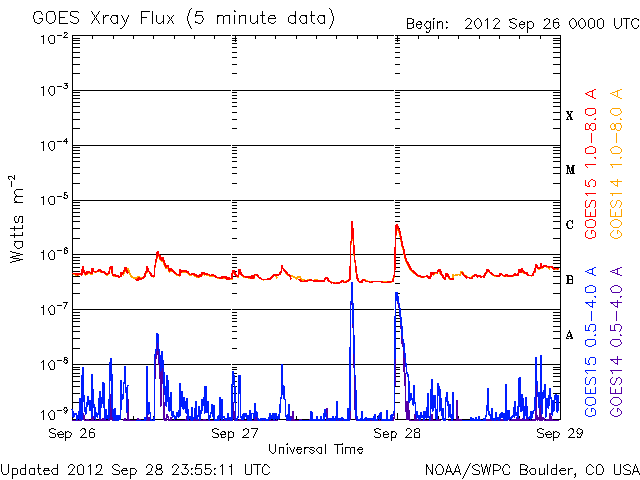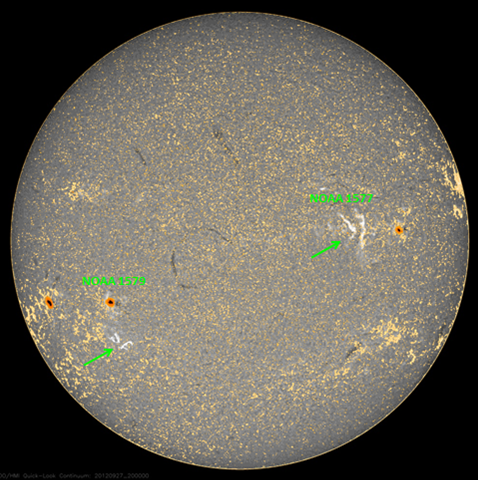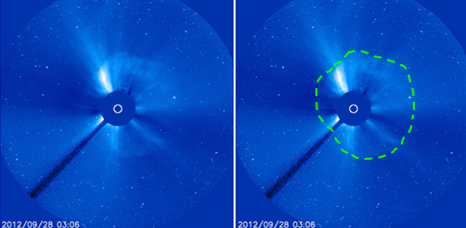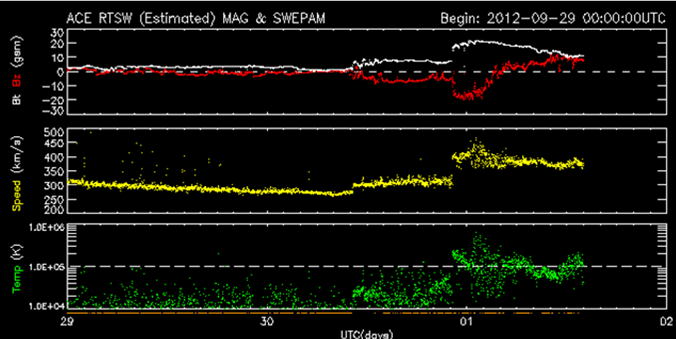On 27 September, the Sun produced 2 almost identical, small solar flares: A C4.4-flare peaking at 17:20UT, and a C3.7-flare at 23:57UT. However, except for their near-equal strength, these eruptions differed quite a bit from each other, and they had also a very different impact on Earth.

The flares took place in 2 different regions. The C4-flare occurred 10° south of NOAA 1579's main spot, in a region void of sunspots and with no filament visible in the chromosphere (H-alpha). The C3-flare occurred in the small sunspot region NOAA 1577, was preceded by a filament eruption, and was followed by a small proton event. The image underneath depicts the location of the flares in relation to the sunspot groups. It is a GONG H-alpha image on which the two flares are indicated, overlaid by a transparent SDO/HMI-image. In both cases, one can see bright parallel patches in H-alpha (a so-called "parallel ribbon flare").

A movie, running from 27 September at 15:00UT till 28 September at 03:00UT, shows both eruptions in full action. The H-alpha clip is supplemented with imagery from SDO/AIA 304 and 171, as well as from SOHO's coronagraphs. It is clear that only during the second eruption material was ejected into space. This can be seen in the SDO/AIA 304 clip as a dark cloud leaving the solar surface, and obviously in the SOHO-movie as a halo expanding from the Sun, meaning that the particle cloud was directed straight towards Earth (image underneath).

In the evening of 30 September, the cloud struck the Earth's magnetic field. Solar wind speed jumped from 300 to about 400 km/s, and the interplanetary magnetic field turned strongly southward (data from ACE). This resulted globally in major geomagnetic storm conditions (only minor storming recorded in Dourbes). Aurorae were seen in Scandinavia, Scotland, Ireland, along the American-Canadian border and Alaska.

 |
 |





